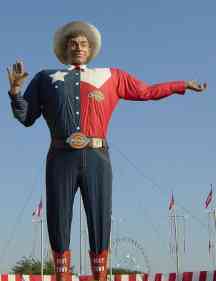Tuesday, November 12, 2013
Day Five - Budapest - Palaces
Today - we enjoyed our third tour from Context Travel in Budapest. Our docent, Enikő Bekes holds a Masters degree in classical philology and art history from the University ELTE, Budapest and one in Medieval Studies from the Central European University. She has a PhD in Neo-Latin Studies from the University of Szeged. Enikő took on a walk through Budapest’s Golden Age saw an unprecedented coming together of wealthy upper-class barons and aristocrats to shape what is known as the Palace District. Over the course of the 19th and early 20th century these barons of Budapest laid roots in the heart of Pest’s 8th district, leaving a legacy that speaks to a time of competition between the great European capitals. Since we are sleeping in Palazzo Zichy - one of the palaces turned into a modern hotel - this tour was especially fun for us.
Day Five - Budapest - Hungarian National Gallery
Located in the Castle district of Buda - the Hungarian National Gallery building dominates the skyline. The permanent collection is manageable and can be viewed easily in about 2 hours. From Gothic period to modern times - the museum displays some of Hungary's best artist.
Day Five - Budapest - Matthias and Fisherman's Bastion
Officially known as The Church of Our Lady, Budapest's Matthias Church was built in 1255 century along Trinity Square, in the heart of the Castle District, and was Buda's first parish church. It just underwent an extensive renovation and well worth a visit.
Outside is the Fisherman's Bastion was built at the site of an old rampart that, during the Middle Ages, was defended by the guild of fishermen, who lived nearby in Vízívaros (watertown), at the foot of the hill. Thus the name of the bastion. An old fish market also sat at this location during medieval times. On a clear day - it provides some impressive views of the Parliament Building and city of Pest.
fi
Day Four - Budapest - Saint Stephen's Basilica
The site of Saint Stephen's was originally an entertainment place on located on a small hill near the Danube river bank. After surviving a terrible flood the local residents dedicated the land to the Church in recognition of their good fortune. And - the Saint Stephen's Basilica was born. Oh it include the hand and forearm of Saint Stephens in a fancy reliquary - which you can illuminate for a mere $300 HUF for 2 minutes.
Day Four - Budapest - Jewish Quarter
Today we joined our docent from Context Travel for a walking tour of the Jewish Quarter in Budapest. Our guide was Kata Vincze - she is smart, talented and a joy to be around. Kata was born in Romania. She received her PhD in Contemporary Jewish Studies and definitely knows her stuff. For three hours we learned about the vibrant and ongoing history of Jews in Budapest, tracing the development of Jewish culture in the city from the Middle Ages to the present. In Budapest - the center for Jewish culture is located in the 7th district. By 1900 25% of the city was Jewish. From assimilation plans to hidden synagogues - Budapest has an amazing history. The Jewish part of Budapest was a lively center of town. Most of the Budapest Jews were never sent to concentration camps because Nazi's exportation plans failed before liberation. However, this was a difficult time and many lost their lives by being shot along the banks of the Danube river.
Today, the modern Jewish culture has created Ruin Clubs - place for contemporary gatherings by the Jewish youth and liberal movement.
Hero's Synagogue
Holocaust Memorial - 1990's
Memorial tablets - Great Synagogue
Hidden Synagogue
Orthodox Synagogue
Art Deco Synagogue
Great Synagogue
Jewish grave marker from Roman Period
Stumbling Stones - mark the homes of Jews lost in Holocaust
Memorial on banks of Danube River
Subscribe to:
Posts (Atom)


























































